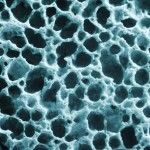
Bisphosphonates (BPs) are used for the treatment of a range of bone problems, e.g., osteoporosis, or bone metastases of malignant cancer. In 2003 the condition of bisphosphonate related osteonecrosis of the jaw (BONJ) was reported. The aim of this retrospective cohort study was to estimate the cumulative incidence and risk ratio for ONJ (osteonecrosis of the jaw) after tooth extraction in patients with and without administration of BPs, and to identify potential risk factors for BONJ, including oral status.
A retrospective cohort of patients (n= 3240) having undergone dental extraction over a 3-year period was examined for BONJ. Oral necrosis was diagnosed by
The presence of exposed bone in the maxillofacial region that had persisted for more than 8 weeks, with reference to diagnostic criteria formulated by the American Association of Oral and Maxillofacial Surgeons.
Diagnosis of ONJ was determined independently by two oral and maxillofacial surgeons cases with diagnostic disagreement were regarded as non- ONJ cases. Medications, medical and dental status were determined
- 3216 patients were analysed.
- 126 had BPs administered, of whom 5 (3.9%, 95% confidence interval (CI): 1.2–9.2) developed ONJ, compared with one (0.032%, 95% CI: 0.00081–0.18) among 3090 patients without BPs administered.
- BPs administration was associated with the development of ONJ after tooth extraction, with an unadjusted risk ratio of 122.6 (95% CI: 14.4–1041.8).
- When stratified by age and route of BPs administration, the risk ratio for ONJ patients aged 65 years or older with intravenous BP administration compared to those without was 200.2 (95% CI: 23.8–1679.4, P < 0.001).
- Patients receiving BP showed a significant association between the incidence of BIONJ and alveolar bone loss score.
The authors concluded
Bisphosphonate administration, particularly intravenous administration, is associated with an increased risk of ONJ after tooth extraction.
Comment
This retrospective cohort study adds to the information regarding the prevalence of BONJ. Regular followers will recall that earlier this year we reported on an appraisal of a systematic review of BONJ that included a sample of 39,124 patients with a mean weighted prevalence of 6.1%. Despite the fact that this is a large cohort only 27 patients were on intravenous BPs and 99 on oral bisphosphonates so as the systematic review suggested further higher quality studies prospective studies are required to accurately characterize the prevalence of BONJ, and to determine effective treatment protocols.
Links
Yamazaki T, et al. Increased incidence of osteonecrosis of the jaw after tooth extraction in patients treated with bisphosphonates: a cohort study, Int J Oral Maxillofac Surg (2012) Article in press.
